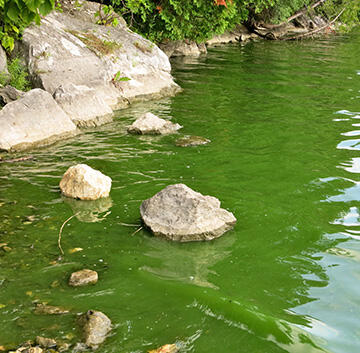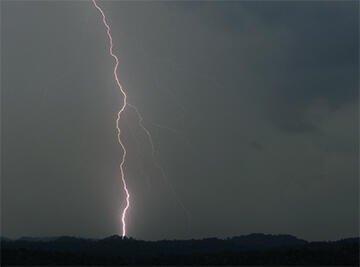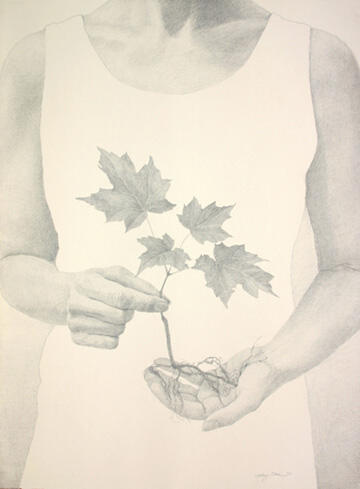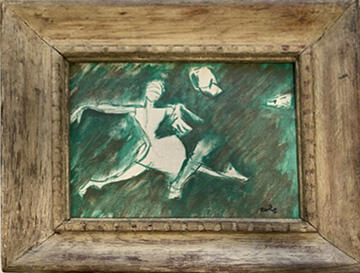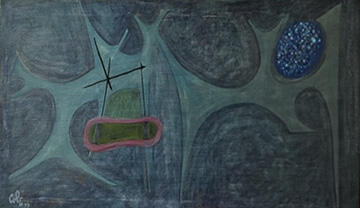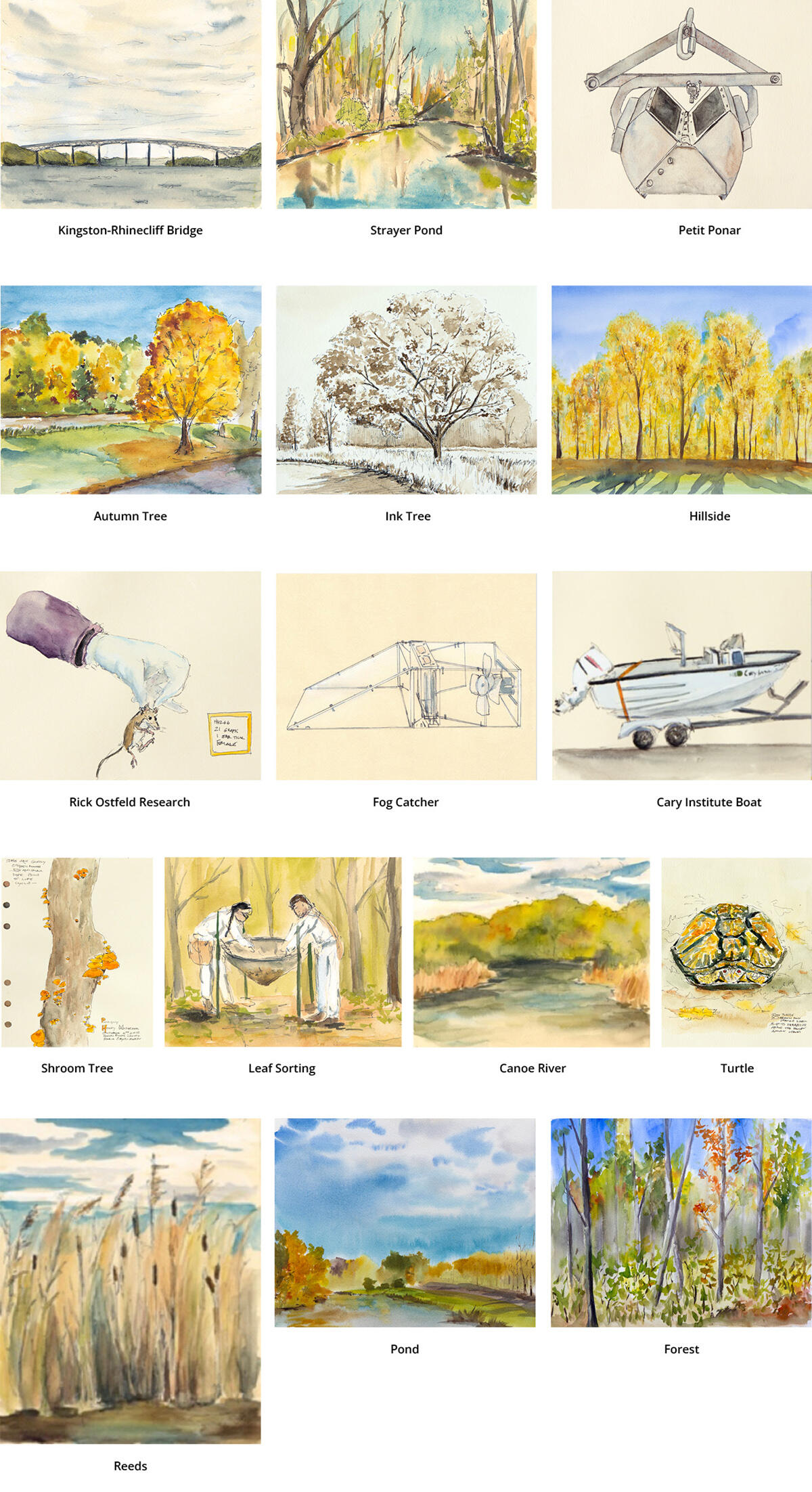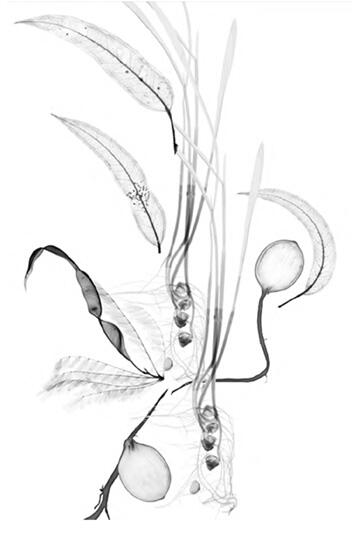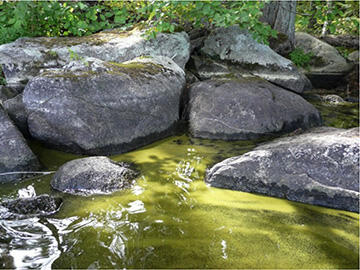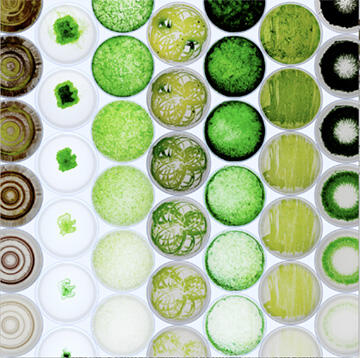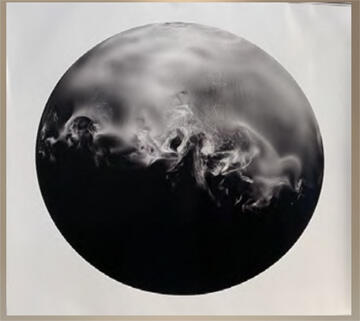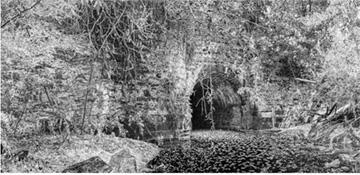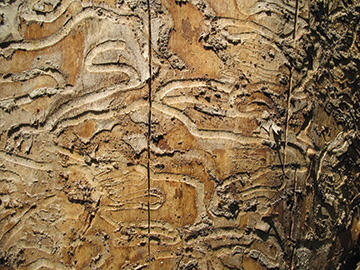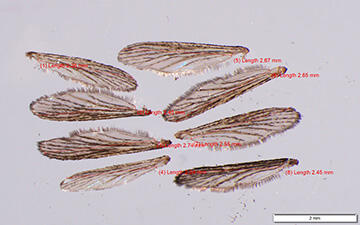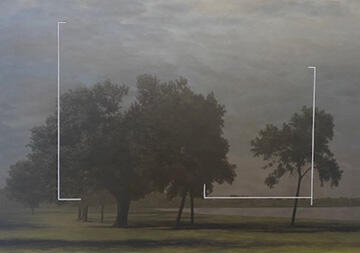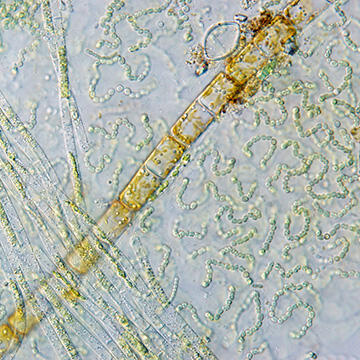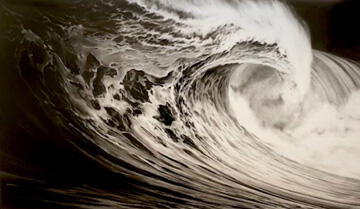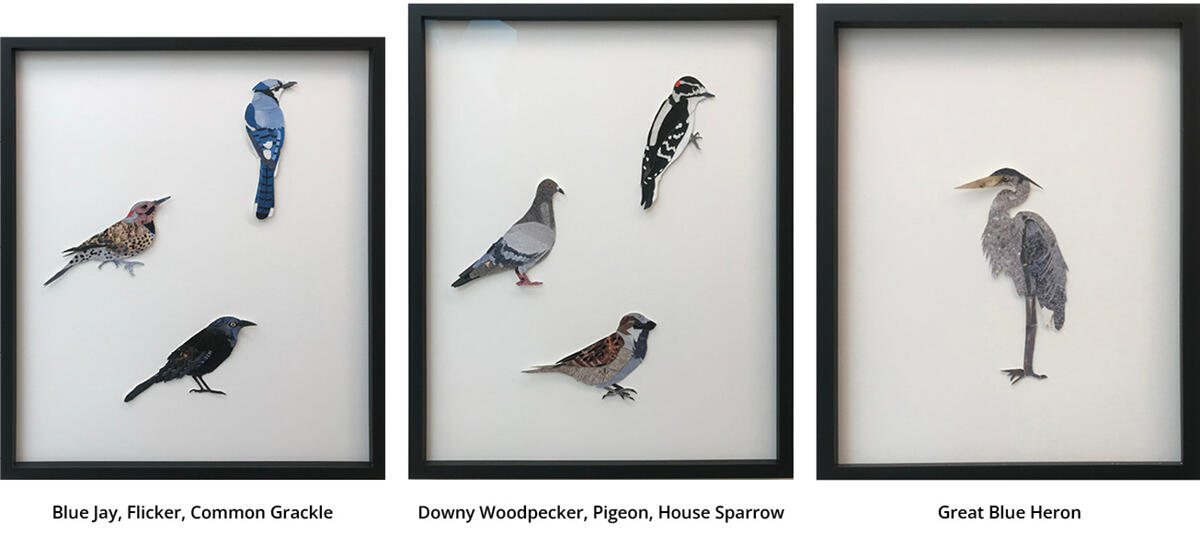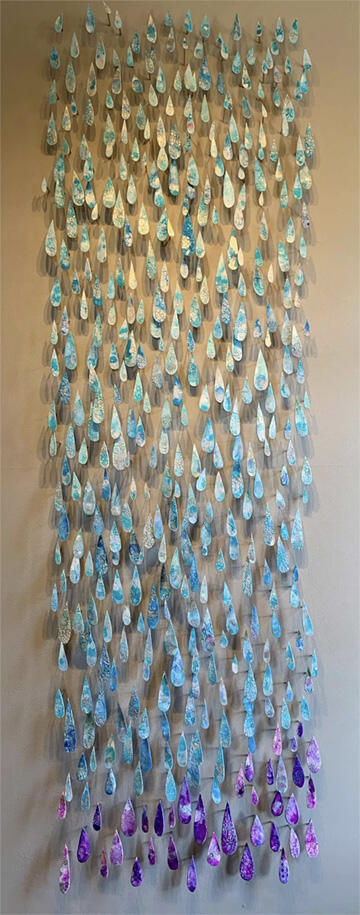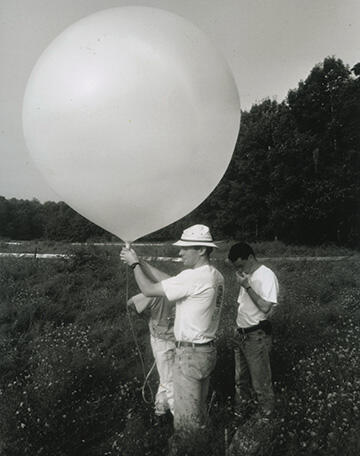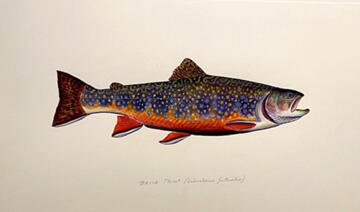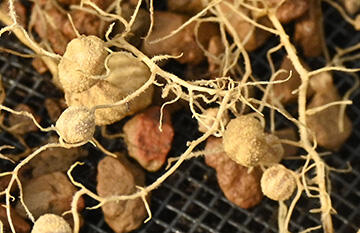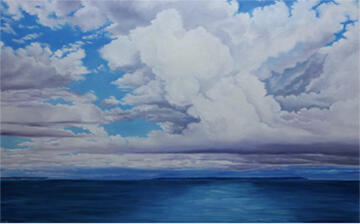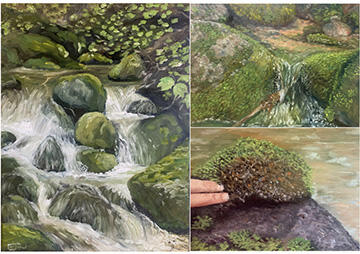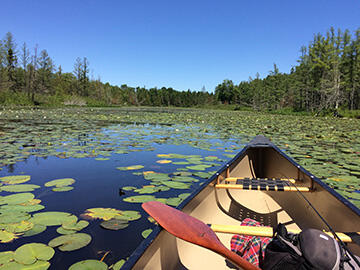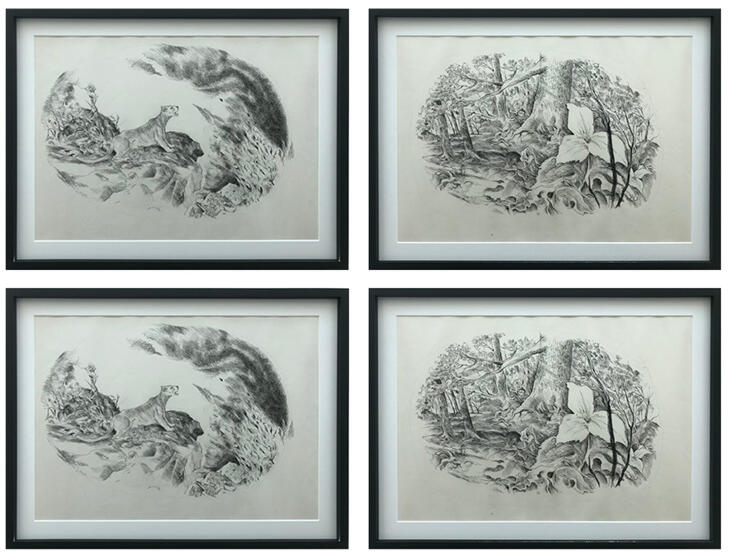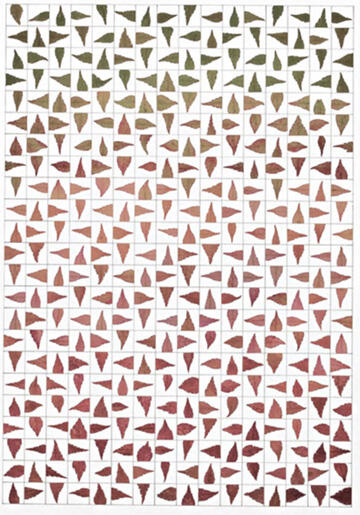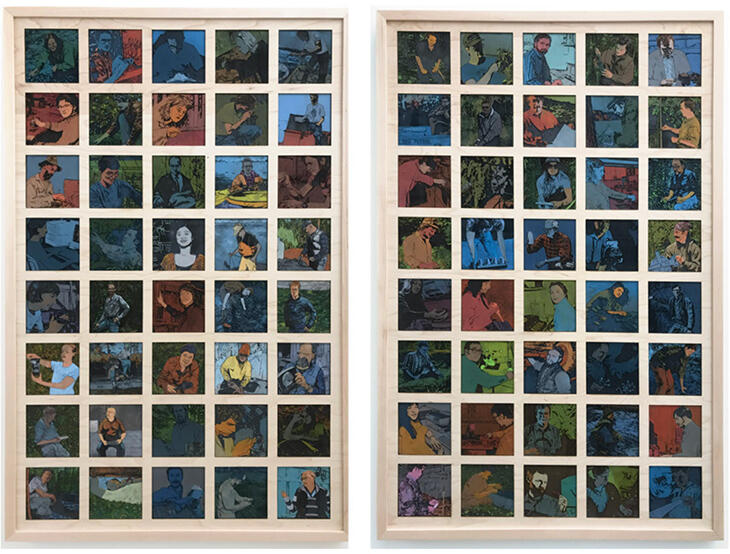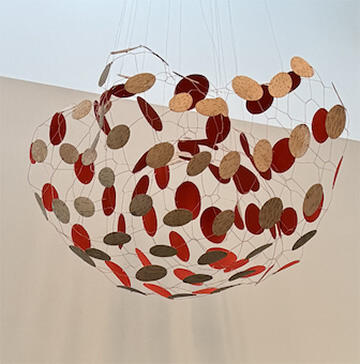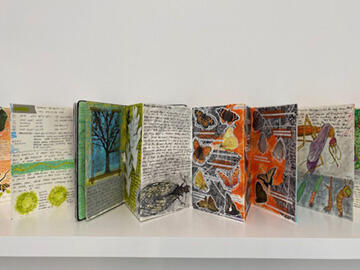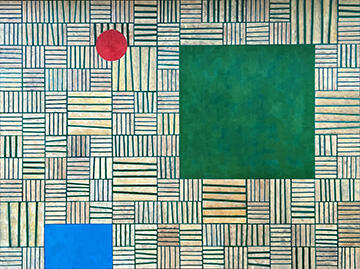
Page in progress.
Artists are listed alphabetically.

Tozer Ecosystem Science Building and Surrounding Forests
Archival Pigment Print
© Seamus Payne, 2021

Aerial images of Cary Institute property, Millbrook NY
Route 44 runs along the bottom, Route 82 up the left side and to the right
Black and white Image - 1942
Color Image – 2023
Archival Pigments Prints

Cary Institute Solar Field
Established 2019 in the Bacon Triangle
Bounded by Route 44 on the South, Route 82 on the North
Archival Pigment Print
© Seamus Payne, 2021

John James Audubon
Arctic Tern
Aquatint engraving with original hand coloring
Plate CCL from Birds of America
Engraved by Robert Havell (1793-1878)
Published: London, 1827-1838
38.5" x 25.5"
Gift from the collection of Graham and Josephine Arader

Barn Swallow

Stanley Hawk
Aquatint engraving with original hand coloring
Plate XXXVI from Birds of America
Engraved by Robert Havell (1793-1878)
Published: London, 1827-1838
38.5" x 25.5"
Gift from the collection of Graham and Josephine Arader

Swan
Aquatint engraving with original hand coloring
Plate CCCCXI from Birds of America
Engraved by Robert Havell (1793-1878)
Published: London, 1827-1838
25.5" x 38.5"
Gift from the collection of Graham and Josephine Arader

Barred Owl
Aquatint engraving with original hand coloring
Plate XLVI from Birds of America
Engraved by Robert Havell (1793-1878)
Published: London, 1827-1838
38.5" x 25.5"
Gift from the collection of Graham and Josephine Arader

White Headed Eagle
About
John James Audubon (born Jean-Jacques Rabin, April 26, 1785 – January 27, 1851) was a French-American self-trained artist, naturalist, and ornithologist. His combined interests in art and ornithology turned into a plan to make a complete pictorial record of all the bird species of North America. He was notable for his extensive studies documenting all types of American birds and for his detailed illustrations, which depicted the birds in their natural habitats. His major work, a color-plate book titled The Birds of America (1827–1839), is considered one of the finest ornithological works ever completed. Audubon is also known for identifying 25 new species. He is the eponym of the National Audubon Society, and his name adorns a large number of towns, neighborhoods, and streets across the United States. Dozens of scientific names first published by Audubon are still in use by the scientific community.

Heather Bird Harris
Embodied Affects, 2024
BFK Rives and mineral paper mounted on cradled panel
48” x 36” x 2"
Paint pigments created from topsoils stressed from heat, drought, and fungicide from soil ecologist Dr. Jane Lucas’s long-term study, and rocks from Wappinger Creek, Millbrook, NY
(Soil pigment examples shown in smaller frames)
About
Science often looks at how individual climate change factors will affect our soils, but what happens when a soil experiences multiple stressors all at once? At Cary Institute, soil ecologist Dr. Jane Lucas is studying what happens to soils when four stressors (drought, heat, fungicide, and antibiotics) co-occur in a large-scale, fully factorial field experiment. The health of the soil is measured through a variety of characteristics, including through assessments of soil biodiversity and the carbon dioxide emitted from microbial life in the soil. Artist and educator Bird Harris created this work using paint pigments created from stressed topsoils from Jane’s study as well as rocks from the Wappinger Creek.
About
Lisa Borre is a senior research specialist and foundation and corporate relations manager for Cary Institute. She provides research support for Dr. Kathleen C. Weathers, and is coordinator of the Global Lake Ecological Observatory Network (GLEON), which “conducts innovative science by sharing and interpreting high-resolution sensor data to understand, predict, and communicate the role and response of lakes in a changing global environment.”
About
Jeffrey Burchfield is an atmospheric physicist and a research associate at The University of Alabama in Huntsville. This photo of a lightning strike in Panama was part of documenting his work with Dr. Evan Gora on the significant consequences of lightning in tropical forests. By disproportionately killing the largest trees, lightning has an outsized influence on carbon storage and biodiversity. And with lightning on the rise due to climate change, understanding its effects will be critical to managing and regrowing tropical forests in a way that maximizes carbon storage and forest health.
About
An oil and pastel painter living in New York and Connecticut, Mary Close Oppenheimer is known primarily for her figure and portrait subjects as well as uncluttered still lifes of recognizable objects.
In recent years she has focused on human relationships with objects that have special symbolism to the subject, expressed through body language in tightly cropped images like the Baby Maple drawing.
About
Paintings by Leonard Cole, the father of Cary Institute’s own Dr. Jonathan Cole. Dr. Cole was among the first cohort of scientists at Cary, and an influential and respected limnologist who was elected to the National Academy of Sciences. His father was a prolific amateur painter. The abstract painting evokes plankton and water – topics that Jon studied closely. Upon Jon’s retirement, he passed the painting to Dr. Emma Rosi until she retired, when she passed it on to Dr. Chris Solomon. So this painting has passed through the hands (and across the walls) of multiple “generations” of aquatic scientists at Cary.
About
Maria Coryell-Martin believes in art as a tool for exploration, observation, and scientific inquiry. This series of vignettes was inspired by her field sketches and conversations with scientific staff during her artist-in-residency at Cary Institute.
Coryell-Martin works in the tradition of traveling artists as naturalists and educators and, since 2005, has focused on painting polar and glaciated regions collaborating with scientific teams. In the field, Maria sketches with ink and watercolor, and collects multimedia recordings to build her palette of place – a record of experience, climate, and color. She develops her work into studio paintings for exhibit as well as presentations and workshops for audiences of all ages to cultivate observation, scientific inquiry, and environmental awareness.
About
Dornith Doherty is an American artist working primarily with photography, video, animations, works on paper, and scientific imaging. Her work reflects upon questions about life and time through artworks created at the intersection of art and science, leading to her collaborations with scientists, archives, botanical centers, and research institutes focused on the preservation of biodiversity and enhancing environmental resilience.
In the spring of 2018 she was part of Cary Institute’s Cannoo Hills Creative Arts Residency.
Columbian Exchange III is part of a series focused on climate change and declining biodiversity called Archiving Eden - an ongoing collaboration since 2008 with renowned biologists at the most comprehensive international seed banks in the world. Utilizing the archives’ on-site x-ray equipment routinely used for viability assessments of accessioned seeds, Dornith documents and subsequently collages the seeds and tissue samples stored in these crucial collections. The amazing visual power of magnified x-ray images, which springs from the technology’s ability to record what is invisible to the human eye, illuminates her considerations not only of the complex issues surrounding the role of science and human agency in relation to gene banking, but also of the poetic questions about life and time on a macro and micro scale.
About
Midge Eliassen was educated as a librarian but has worked primarily as a writer, editor, photojournalist, and architectural photographer. She is a longtime citizen scientist and environmental photographer, primarily at Lake Sunapee, NH. Midge has volunteered with the Society for the Protection of New Hampshire Forests, and the Lake Sunapee Protective Association where she worked with Dr. Kathleen Weathers and colleagues researching surprising blooms of the cyanobacterium gloeotrichia echinulata in low-nutrient lakes across New England. Understanding the causes and consequences of these "gloeo" blooms for lake water quality and health (i.e., plankton communities and ecosystem functioning) – and applying what is being learned – is part of the team's long-term studies.
About
Erin Espelie is a writer, editor, and filmmaker with degrees in molecular and cellular biology from Cornell University and in the experimental and documentary arts from Duke University.
The images in the Cyanobacteria Triptych are part of an art-science collaboration that looked at the microscopic ways cyanobacteria move, both on an individual level and in colonies. In 2022, it became an exhibit at the Denver Art Museum called REFRESH and comprised a series of films, canvases, and a dynamic living wall exposing the multifaceted worlds of cyanobacteria. REFRESH reveals microscopic landscapes that allow us to ponder how these prehistoric organisms shaped our world, and how they influence a variety of ecosystems today.
Created by faculty at the University of Colorado Boulder, this collaboration provided an extraordinary view of the shape, structure, and interaction of cyanobacteria, diving into the diversity and scope of form, function, and scientific potential of these essential and complex organisms. Viewers were invited to explore four different species of cyanobacteria (Synechococcus sp. PCC 7002, Anabaena sp. ATCC 33047, Fremyella diplosiphon, Oscillatoria prolifera) across the living wall exhibit and immerse themselves in the microscopic landscapes portrayed in the films.
Espelie currently holds an assistant professorship in cinema studies and the moving image arts and critical media practices at the University of Colorado Boulder, where she co-founded the Nature, Environment, Science & Technology (NEST) Studio for the Arts.
About
Mary Flad began weaving around 1970 and was drawn to tapestry a few years later, after meeting the Swedish artist Margareta Grandin-Nettles. Her inspiration is drawn from her natural surroundings in the Hudson Valley. Working at the loom, Mary has created flat-weave rugs, tapestries, and wall hangings, including commissioned works like this one for Cary Institute through Founding Director and President Emeritus Gene Likens. In addition to her weaving, Mary’s published work includes articles and essays concerning immigrants and refugees, displacement, and the search for home and community.
About
Stephen Galloway works in the studio using natural materials to make compositions and tableaux for the camera. These photographs are made with minerals, water, vapor, and light, as elemental symbols of earth, air, water, and fire.
The collection of Orb images that includes Onyx Marble emerges from our present era - when we find ourselves in a time marked by climate anxiety and societal upheaval while simultaneously experiencing astonishing revelations concerning the cosmos and our connection to it. Stephen's images are guided by a fusion of the thought, sensation, and anticipation that defines our current sensibility.
A native of the eastern US, Stephen says of his work, “I turned to making art about landscape to deeply explore my adopted California. Sometimes the art has followed experiences with nature; sometimes it has led to those experiences. I can no longer tell the difference, as the contact and the art are inextricable. What I do know is that the deeper I go with nature, the more I am able to live with peace, awe, change, paradox, and inspiration. My only hope is that some of these aftereffects reach others through my artworks.”
About
Helen Glazer’s work in photography and photogrammetry-based sculpture is informed by scientific insights into interacting forces affecting ecosystems and shaping landscapes, including the impact of human activity and decisions. Over time, her focus has shifted from drawing, painting, and painted sculpture to a current emphasis on photography and photo-based sculpture as a way to investigate and understand complex, ephemeral forms in nature, and capture the quirky incidents and surprising and evocative moments of transformation.
The photographs shown here come from Helen's year-long Baltimore Ecosystem Study (BES) artist-in-residency. The BES is part of a network of 28 long-term ecological research (LTER) sites funded by the National Science Foundation, and one of only two LTER sites to focus on urban ecology. The main focus of long-term data collection is the Gwynns Falls watershed, which extends from rural woodlands into the heavily urbanized west side of Baltimore, where it eventually empties into the harbor. In order to find these places and understand their significance within the concerns of ecologists, Helen hiked along urban streams with hydrologists, visited the site of a major landslide due to storm water runoff, and walked the back alleys of impoverished neighborhoods with the Baltimore Mosquito Study. These places are seldom noticed or visited by most Baltimoreans, despite being in the midst of a heavily populated region. She was often startled by what she saw and part of her goal was to serve as an intermediary between the scientists and the public, to communicate what she learned to a general audience.
About
John Hritz is a musician, computer hacker, philosopher, and former large-animal vet. His work depicts an invasive forest pest that is wreaking havoc on native ecosystems and was part of the research being done by the late Dr. Gary Lovett of Cary Institute.
About
Margaret Jacobs’s works are meant to center plants and botanicals as kin; as plant relatives. The botanicals she has chosen to create are used medicinally, culturally, and/or nutritionally and are important to her Akwesasne Mohawk ancestral culture. Broadleaf plantain, also called "white man's footprints" due to its sudden appearance after the arrival of European settlers, is not native to the region but has been adapted by Haudenosaunee peoples to use culturally and medicinally. In the piece, she is discussing the adaptation and survival of her community amongst changing relationships of and to the land. Blueberry and raspberry are vital to health and used in many dishes, and she sees these as the sisters to strawberry, which is an indicator of spring and the first berry of the season.
About
Grace Katz did a high school senior thesis project with Dr. Shannon LaDeau. The publication that resulted from this research shows that wings from mosquitoes trapped in less affluent Baltimore neighborhoods were longer than same-species individuals trapped on wealthier blocks. Bigger mosquitoes have been associated with higher fitness and potential disease transmission. This work suggests that residents in less affluent neighborhoods may be at a greater risk of mosquito-borne disease.
About
Contemporary painter David Klamen superimposes geometric lines over realist landscapes, combining abstract and figurative approaches in works that pose epistemological questions about art, humans’ self-understanding, and the systems that guide their experience of the world. Klamen is deeply interested in literature, theology, and philosophy, and his practice is based on investigative strategies reflecting those concerns.
Given this intellectual approach, Klamen does not tether himself to one way of working. Instead he adopts various styles based on their compatibility with his inquiries. This painting is part of a body of work that uses landscapes to present a cross-section into his ongoing exploration of how we interpret things and how we come to understand images. He further invites viewers on a journey of associations, memories, and perhaps even a discovery of how we come to know what we know and to slow down the process of understanding what is depicted.
Klamen is currently is a professor of fine arts at Indiana University Northwest. His work is represented in the public collections of prestigious museums throughout the US and as well as in South Korea.
About
Dr. Shannon La Deau’s research focuses on understanding heterogeneity in urban mosquito abundance and transmission risk. Neighborhood disinvestment results in infrastructure decay that supports mosquito population growth. This work is advancing the science needed for effective management of vector-borne disease risk in cities, and emphasizes the important role that legacies of disinvestment have on urban well-being and the ecology of mosquito-borne diseases.
About
Honey and Ice: Fragile Elements Pair is part of a collection comprised of vibrant, monumental photographs taken by Lautenberg while flying in a plane over mountainous Israel, and while traveling in a boat around the shores of Antarctica. In this collision of two extremes, the beauty of endangered ecosystems offers a compelling statement of ecological concern.
As an esteemed photographer, writer, philanthropist, and businesswoman, Lautenberg’s photographs are included in both private and museum collections and include records of her travels as well as series about political stars, pop rock, and celebrities.
About
Dr. Sylvia Lee worked as a postdoctoral associate at Cary Institute from 2014-2016. She worked closely with Dr. Emma Rosi studying the effects of pharmaceuticals, drugs, road salt, and nutrients on stream communities and stream ecosystem function. Dr. Lee is a scientist with the US EPA and continues to advance our understanding of stream algae.
About
Brooklyn-based artist Robert Longo made drawings of massive, thundering waves using just charcoal (on mounted paper). Called Monsters, the drawings almost look like black-and-white photos of that crescendo moment before an epic wave breaks and are what Longo considers “absolutes” - embodiments of the collective unconscious.
Widely collected and exhibited, Longo’s work has drawn from semiotics and poststructuralist theory to investigate the way meaning is made and circulated in modern society. His work often critiqued the anesthetizing power of consumer capitalism and the indoctrinating effects of mass media. Themes of war, alienation, and consumption have remained central to Longo’s practice throughout his career.
Longo continues to work with characteristic scale, precision, and perceptiveness, achieving images that, while drawn from recent history, would be otherwise impossible to see with the human eye. His latest body of work, A History of the Present, which he began in 2020, is informed by the coronavirus pandemic, the nation’s political upheaval, and our tenuous ecological future, and is fueled by the artist’s personal experiences. Through this group of large-scale charcoal drawings, Longo seeks to focus on the power of the viewer and the individual’s capacity to create change, a celebration of freedom of expression.
About
Nature and the environment are a central focus in Jessica Maffia’s work. As a visual artist born and raised in New York City, she works across a wide variety of media to celebrate the familiar and honor the natural world of the city, through repetitive, meditative processes. Her work has been exhibited throughout the US and is featured on the covers of Fabio Gironi's philosophy book Naturalizing Badiou: Mathematical Ontology and Structural Realism and poet Firas Sulaiman’s book As if My Name is a Mistaken Sign. Her installations include a permanent mural installation for the Audubon Mural Project.
About
Blue Monsoon is simultaneously a monsoon of rain reflecting a blue sky and a multitude of tear drops cascading. This piece is a response to our warming planet and the fires that ravage it. Every year, smoke obscures the bright blue Western sky, which added a particularly apocalyptic air to an already intense 2020, when “Blue Monsoon” was created. Made of clay and hope, this is a devotional piece to Mother Nature—a prayer for rain—each hand-painted ceramic drop, embossed with lace patterns, an offering. Lace is complex, intricate, and intimate, like our thoughts and our most personal appeals to that which is greater than ourselves, be it nature or deity, when the world feels like it is burning and a global pandemic is raging. The bright blue sky, a symbol of optimism, offers tranquility, reflecting hope and healing for the planet.
A Colorado native and Boulder-based artist, Julie Maren originally began her career as a painter and stone carver. She is driven by materials and experimentation, color and pattern, microscopic and macroscopic perspectives, and creating depth, both dimensional and illusionary. Loose narratives are often woven throughout her works, expressed through her unique vocabulary of color, imagery, and symbolism.
About
Robin Moore is a photographer, filmmaker, author, and passionate conservationist whose images and stories have been graced the pages of National Geographic, The Economist, Esquire, The Telegraph, Photo District News, American Photo, Outdoor Photographer, Wanderlust, Terre Sauvage, Conservation, and TIME for Kids, among others. His work has been exhibited in galleries around the world, from the UK to the US to New Zealand. This image came as a result of Robin accompanying Dr. Rick Ostfeld in the field to document his research on the ecology of infectious diseases.
About
This work is a single repeat vignette of the original Homogecene Repeat, which was installed as a wallpaper at the Katonah Museum of Art on a 144”H x 240”W gallery wall in 2009.
Before starting the painting of the wallpaper vignette, Moritsugu met with researchers at Cary Institute to learn more about the endemic and invasive plants in the Hudson Valley, including Shannon L. LaDeau, disease ecologist; Amy Schuler, director of information services & library; and Dave L. Strayer, freshwater ecologist.
Artist statement about the work
“Homogecene” is a term used to describe the current era of global biological “flatness.” With the introduction and establishment of tough generalist species, biological borders fade and once-distinct habitats grow increasingly similar. Homogecene Repeat depicts a lush, natural habitat filled with species endemic to the Northeast. Hidden within the negative spaces, like a premonition or warning, are the silhouettes of introduced species that threaten to transform the Hudson River Valley into a homogenous environment.
Specific species found in Homogecene Repeat
FOREST ENVIRONMENT
Endemic species include:
Hemlock (Tsuga canadensis)
Sugar maple (Acer saccharum)
American beech (Fagus grandifolia)
Introduced species include:
Hemlock wooly adelgid (Adelges tsugae)
The HWA is an aphid-like insect that attacks North American hemlocks, forming small cotton-like, wooly masses on the underside of branches. They have a small proboscis-like appendage for feeding that they insert into the base of the hemlock needle.
Asian longhorned beetle (Anoplophora glabripennis)
The ALB was feeds on hardwoods like maple, birch, elm, and ash. Infestations were found in Manhattan, Queens, Staten Island, Islip, and Long Island. As of 2022, the Manhattan, eastern Queens, Staten Island, and Islip infestations have been eradicated.
Beech bark disease
BBD results when the beech scale insect, Cryptococcus fagisuga, attacks the bark, creating a wound. Two different fungi (Neonectria faginata and N. ditissima) can then invade the tree through the wound, causing bark lesions to form. These eventually disrupt the tree’s nutrient transport system, leading to the tree’s deterioration.
TIDAL SWAMP COMMUNITY
Endemic species include:
Southern arrowwood (Viburnum dentatum var. lucidum)
Common buttonbush (Cephalanthus occidentalis)
Pickerel weed (Pontederia cordata)
Smooth alder (Alnus serrulata)
Introduced species include:
Viburnum leaf beetle (Pyrrhalta viburni)
This beetle has been found in Manhattan and the Hudson Valley. It is a voracious eater and can cause severe defoliation to viburnum and southern arrowwood shrubs.
Japanese stilt grass (Microstegium vimineum)
Japanese stilt grass resembles a small bamboo that grows to a height of 3.5 feet and forms dense stands. It grows in a variety of habitats, where it crowds out endemic species.
Mile-a-minute weed (Persicaria perfoliata)
This barbed vine with triangular shaped leaves smothers other plants, shrubs, and trees by creating dense thickets that shade out sunlight. It grows up to 6 inches a day, and its seeds can survive in soil up to 7 years.
AQUATIC COMMUNITY
Endemic species include:
Clasping-leaved pondweed (Potamogeton perfoliatus)
Wild celery (Vallisneria americana)
Introduced species include:
Water chestnut (Trapa natans)
This annual aquatic plant crowds out other endemic plants by blocking sunlight with its blanket of floating leaves. The water chestnut produces hard, nut-like seeds that have four barbed spines. The seeds propogate the parent colony or are spread by floating to other areas.
Note: The endemic species are depicted in the vignette. The introduced species are hidden in the negative spaces.
Zebra mussel (Dreissena polymorpha)
Zebra mussels are small and have elongated shells usually marked by alternating light and dark bands. They filter vast amounts of water to feed on plankton, altering food availability for other species. They attach to rocks, piers, and solid structures with byssal threads, tufts of fibers located at the hinge of their shells.
The following are hidden in the vignette:
43 insects
13 water chestnut seeds
3 water chestnut plants
10 zebra mussels
3 mile-a-minute vines
1 Japanese stilt grass palnt
Beech bark disease on 4 beech trees


Mary Flagler Cary
Archival pigment prints from original, historical images
Two workers with tree on trailer
Two workers with wrapped root ball on a trailer
Standing in front of a red maple that was removed
Men in the tree’s branches
About
Mary Flagler Cary was the daughter of Harry Harness Flagler and granddaughter of Henry Morrison Flagler, one of the founders of Standard Oil. Dividing her time between New York City and Millbrook, she built a collection of trees on her large Millbrook estate. Upon her death in 1967, Mary left the estate’s 2,000 acres to a charitable organization engaged in the conservation, maintenance, and preservation of natural resources. In 1971, the Mary Flagler Charitable Trust accepted a proposal from the New York Botanical Garden to establish an arboretum. That arboretum is now part of Cary Institute of Ecosystem Studies.
About
A graduate student at Cary Institute recording aerial photography using a 35mm camera attached to a helium balloon in 1998.
Learn more about the research: https://nyheritage.contentdm.oclc.org/digital/collection/cies/id/685/re…
About
Ann Olsson is a photographer, researcher, and USGS Physical Scientist focused on biogeochemistry, ecosystem ecology, soil science, and biogeography. Her images in the Cary collection depict postfire landscapes in Yellowstone National Park related to the work of her husband, Cary Scientist Dr. Winslow Hansen.
About
Artist, writer, naturalist, and Yale graduate James Prosek published his first book at 19 years of age, Trout: An Illustrated History, which featured 70 of his watercolor paintings of the trout of North America.
He spent eight years documenting the physical diversity of the trout of Europe, Asia, and North Africa through watercolor representations. His extensive research is recorded in Trout of the World, an illustrated history of the native trout he encountered during his travels abroad. As an individual, Prosek has worked to generate awareness of the threats to native trout species, such as dams, development, wars, pollution, overfishing, and irrigation.
Prosek is the author of over a dozen books and won a Peabody Award for his documentary about traveling through England in the footsteps of Izaak Walton, the 17th-century author of The Compleat Angler. He co-founded a conservation initiative called World Trout in 2004 with Yvon Chouinard, the owner of Patagonia clothing company, which has since raised millions of dollars for coldwater habitat conservation. In 2012, Prosek was awarded the Gold Medal for Distinction in Natural History Art from the Academy of Natural Sciences in Philadelphia.
About
Brandon Radcliffe earned his master’s degree in forestry from Yale School of the Environment in 2024. He took this photograph during an internship working with Dr. Sarah Batterman at Cary Institute of Ecosystem Studies in October 2021.
About
Dr. Emma Rosi is a leader in the field of freshwater science. Her research has advanced our understanding of how land use, urbanization, and climate change shape freshwater ecosystems, with projects exploring environmental contaminants such as pharmaceutical and personal care products, aging wastewater infrastructure, environmental implications of agricultural GMOs, and the effects of dams. She is a Fellow of the Society for Freshwater Science and served on the US Environmental Protection Agency’s Science Advisory Board. Emma is now an emeritus scientist at Cary Institute, and is pursuing art full time.
Her artwork can be viewed at emmarosi.com.
About
This image was taken on Tenderfoot Creek near the Michigan/Wisconsin border, at a field station where Cary scientists including Dr. Chris Solomon have conducted research for over 30 years. This research has focused on connections between terrestrial and aquatic ecosystems, trophic cascades, the role of lakes in the carbon cycle, social-ecological dynamics in recreational fisheries and their implications for sustainability, and other topics. Dr. Alex Ross took the picture while working on these projects as a Cary researcher.
About
The entire series of sketches, of which four are installed, represents one of the founding missions of Cary Institute by depicting a classic, successional sequence from disturbance (fire) through impact, through recovery. The artist, Howard Simon, was a painter, printmaker, illustrator, and author born in 1902. After studying in Paris, he established a career as an artist with a focus on social realism and landscapes, later focusing on woodcuts and illustrations, and etchings and paintings. After serving on the faculty of New York University for more than 20 years, Howard settled in Dutchess County, NY. He is the author and illustrator of 500 Years of Art in Illustration.
About
Linda Stillman uses diverse media – collage, installation, painting, photography, sculpture – to investigate concepts of time, memory, and our interaction with nature. Of particular interest to her are everyday, often meaningless or overlooked objects and fleeting moments of experience, and the ways in which they are collected, preserved, and remembered.
Through her art, she explains, “I’m quietly, yet earnestly, showing that we should marvel at the natural world and our material culture and not take it for granted. Things change, grow, die, and disappear. By noticing and documenting nature and our everyday life and by turning observations into art, we can hope to hold onto our memories of the world around us.”
About
A serious nature photographer since 1969, Hardie Truesdale is interested in capturing nature in dramatic yet subtle circumstances (rain, sleet, snow, or mist) or when the mood and quality of light is intensified. He works with large- and medium-format cameras because of their clarity and the ability to capture texture and detail. This photograph was taken in early spring from the Pinnacle Path along the Sky Top ridge at the Mohonk resort, bordering on the Mohonk Preserve property.
About
Craig Upson’s artistic interest is steeped in the unconventional, and expresses itself largely through portraiture in a diverse array of mediums. This diptych is an assembly of 80 portraits that serve as an homage to researchers associated with Cary Institute. Each piece is meticulously crafted, transitioning from a photographic snapshot into a painted narrative on wood relief. The subjects, captured in moments of deep engagement with their work in the field or laboratory, are elevated through an artistic process that intertwines technology with traditional artistry.
About
Kirsten Westphal is a sculptor and artist based in New York City and Dutchess County, NY. Her creative practice spans various scales, from expansive room-sized installations of wooden constructions to diminutive, more ephemeral suspended pieces assembled from paper and metal.
In this work, the spaces within the Cary Institute are an invitation for the outdoors to dialogue with the interior, providing an opportunity to play with the passing light of day. Westphal wanted to create an open, expansive form that suggests volume, casts shadows, and has motion. The pale distinctive pattern of the paper birch is instantly recognizable and clads the exterior of the cloud. The vermilion on the reverse is a reference to the equally recognizable red-bellied woodpecker, which are both native to this region.
About
Hara Woltz is an artist and scientist who addresses the destruction and conservation of ecological systems through a variety of visual media. Field research is integral to the creation of her work, and her solo and collaborative projects investigate the relationships between humans, the environment, and other living organisms.
Woltz is a former Cannoo Hills Creative Arts artist in residence at Cary Institute, and teaches as part of the Institute’s yearly summer Art and Science Camp. She has developed and taught a variety of classes and workshops on the art of observation and the field journal as it relates to scientific research and artistic practice.
She has worked on a number of global ecological and habitat design projects, including habitat restoration for native species in New Zealand; giant tortoise and waved albatross habitat assessment and restoration in Galapagos, Ecuador; and biological and resilience programs in Solomon Islands, Melanesia.

